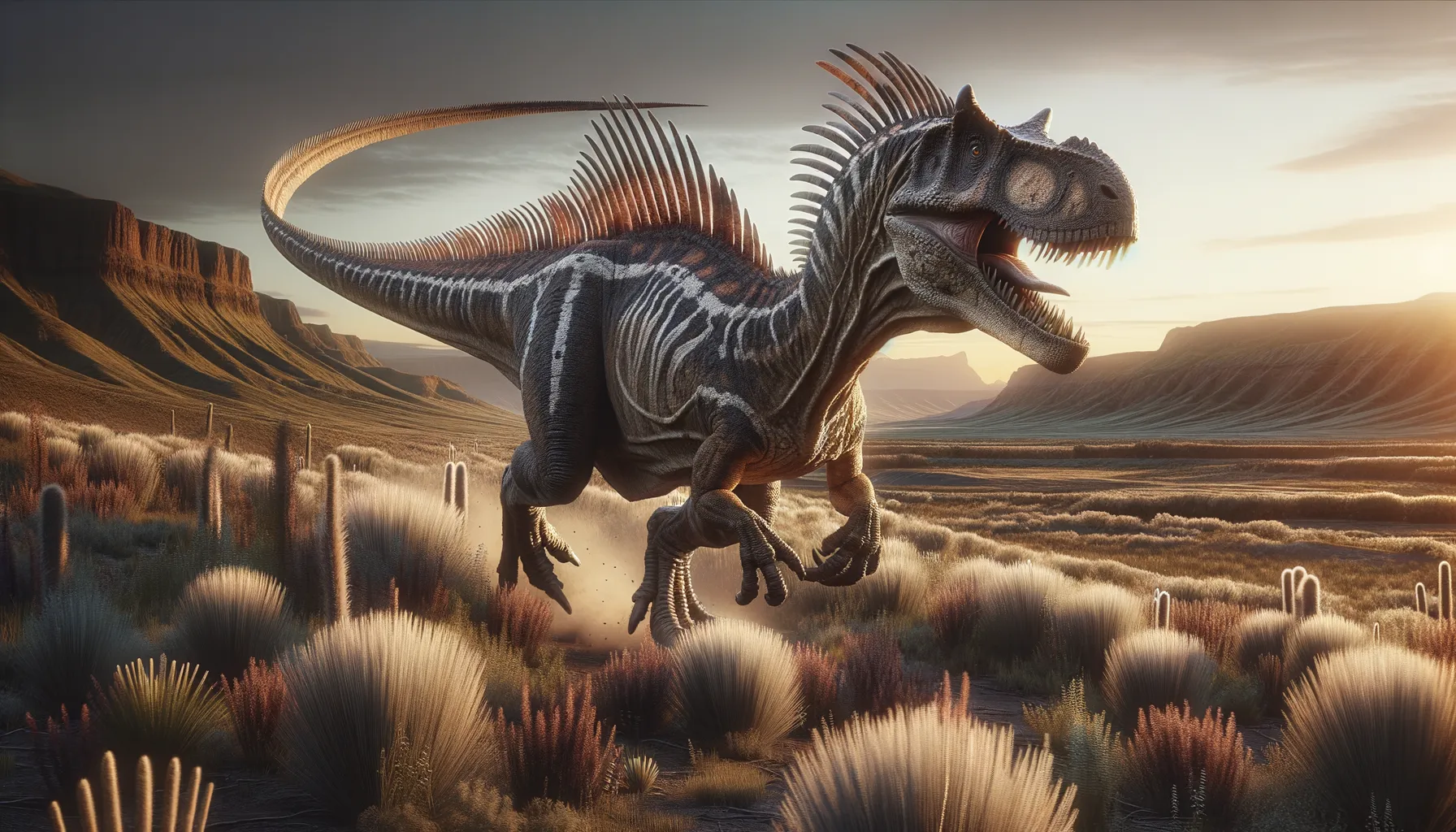
Ceratosaurus
Horned Hunter of the Jurassic Plains.
Period
Jurassic
Length
Approximately 6 to 8 meters long.
Height
About 1.5 to 2 meters at the hip.
Weight
Approximately 500 to 1,000 kg.
Ceratosaurus was a carnivorous dinosaur known for its distinctive horned snout and row of bony armor along its back. Living during the Late Jurassic period, it roamed the ancient landscapes of what is now North America. With a build suited for both speed and power, it was an effective predator. Its fossilized remains provide valuable insights into the diverse ecosystems of its time.
Diet
Ceratosaurus was primarily a meat eater, feeding on smaller dinosaurs and other animals. Its teeth were sharp and serrated, ideal for slicing through flesh. It may have also scavenged, supplementing its diet with carrion.
Hunting
This dinosaur likely used its keen senses and stealth to ambush prey, leveraging its relatively slender build for speed. The presence of grasping claws and powerful jaws suggests it was an effective predator in its environment.
Environmental challenges
Ceratosaurus lived in a period of significant ecological change, with diverse flora and fauna emerging. It faced competition from larger predators like the Allosaurus. Climatic shifts would have influenced its hunting grounds and prey availability, requiring adaptable survival strategies.
Speed
Moderate; capable of running swiftly.
Lifespan
Estimated around 30 to 50 years.
First discovery
Discovered in the late 19th century in Colorado, USA.
Fun Facts
- Ceratosaurus is known for the unique horn on its nose, which might have been used for display or combat.
- It lived during the Late Jurassic period, around 150 million years ago, roaming areas that are now North America and possibly Europe.
- Unlike some other theropods, Ceratosaurus had a row of bony armor plates, called osteoderms, down its back.
- Fossils show that they had long, powerful tails which might have helped them swim, suggesting they were comfortable near water.
- Ceratosaurus had a flexible and lightweight skull filled with sharp teeth, ideal for catching prey.
- Remarkably, the first Ceratosaurus fossils were discovered in the late 1800s, making it one of the early dinosaur discoveries in paleontology.
- Despite once being thought of as a rare dinosaur, more recent finds suggest Ceratosaurus was more common than originally believed.
Growth and Development
Ceratosaurus hatchlings were likely quite vulnerable, requiring rapid growth to avoid predators. Juveniles might have stayed in sheltered environments until they were large enough to fend for themselves. The growth patterns visible in fossilized bones suggest a fast development period, typical of carnivorous dinosaurs.
Habitat
It inhabited floodplain environments with plentiful water sources and vegetation. These regions supported a wide range of animals, providing ample food for Ceratosaurus. Seasonal changes would have influenced its migration and hunting behaviors, as it sought optimal living conditions.
Interaction with other species
Ceratosaurus was part of a complex ecosystem with interactions ranging from competition with other carnivores to predation on herbivorous dinosaurs. It may have occasionally clashed with similarly-sized predators over territory and resources. Fossils in proximity to other dinosaur species indicate periodic overlaps in hunting grounds.
Natural lifespan
Assumed to live up to or slightly over 30 years in the wild.
Reproduction
Ceratosaurus likely laid eggs in nests, possibly guarded until hatching. Its reproductive behavior might have involved specific courtship displays to attract mates. Fossil evidence suggests communal nesting sites, indicating some level of social interaction during the breeding season.
Social behaviour
Its behavior was likely more solitary, except possibly during mating or hunting scenarios. Younger Ceratosaurus might have formed small groups for protection. Vocalizations and body displays could have been used for communication among individuals.
Fossil locations
Fossils of Ceratosaurus have predominantly been found in North America, notably in the Morrison Formation spanning Colorado and Utah. Additional discoveries have been made in Portugal, indicating a broader range than initially thought. These findings help to map its habitat and distribution during the Late Jurassic.
